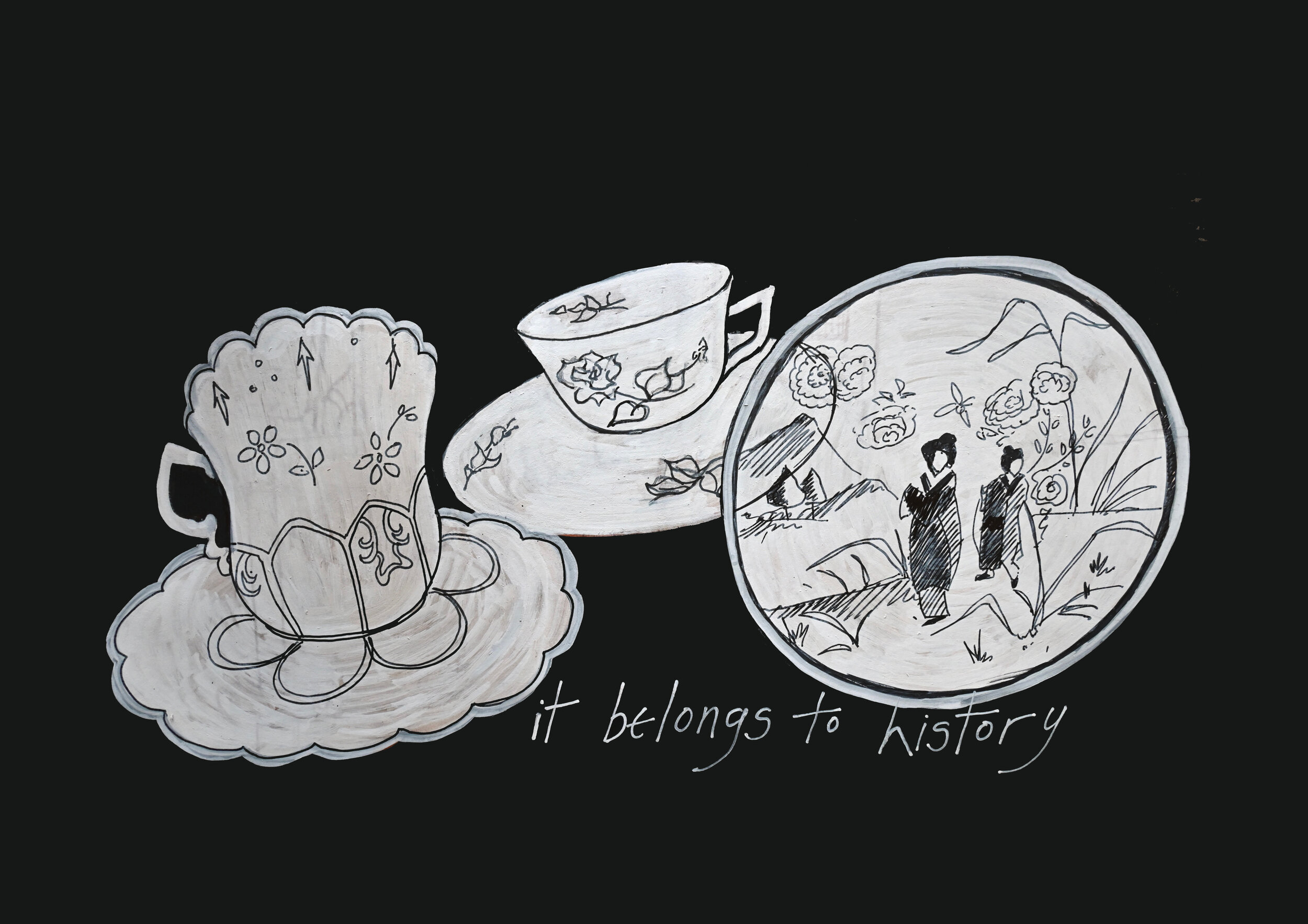Aurora Zinder

Aurora Zinder grew up in Odessa, Russia, surviving under oppressive Soviet rule. In 1942, her father died fighting fascists in Ukraine. By the late 1970s, antisemitism in the USSR had grown so severe that Aurora and her family were forced to flee. Mindful of the corrupt whims of customs officials, they made difficult choices about which items they could bring with them on their journey to New York. A suitcase containing rare china survived the journey and these precious heirlooms still connect Aurora to her history. Her story is brought to life by artist Jacqueline Nicholls.
From artist Jacqueline Nicholls
“What would you bring?” Is such a provocative question. Inviting us to empathise and imagine ourselves leaving the familiar and stepping into the precarious unknown. What do we take with us that might not be particularly useful, or valuable, but are precious because they carry the traces of the people and places we need to say goodbye to.
Hearing Aurora Zinder’s story I was struck by how much was being carried in these small fragile items of crockery. Their delicacy betrays their strong bonds of connection to her family and the country of her childhood. These items might not have been the first choice, but they are the ones that were allowed, and small enough to be portable. So not the volume of Pushkin, or the other books. Not the handwritten letters from Aurora’s late father. Instead, a small, seemingly insignificant teacup. But that teacup carried on it a message from her uncle, a trace of him, and with that, a trace of her father. Traces of traces - so slight and yet, or rather because of its fragility, so powerful.
The film is a stop-motion animated drawing that is divided into three parts. Each part telling the story of one of Aurora’s objects. The crockery that was carefully wrapped in layers as they made their way across the borders seeking refuge and starting a new life. The drawings begin with using tea as a drawing medium, which is subtle and slight to work with. Layers of watercolour and ink were then built on top of the tea as the story developed. The shapes and details dissolving and transforming into the final black and white image, when the story is complete.
